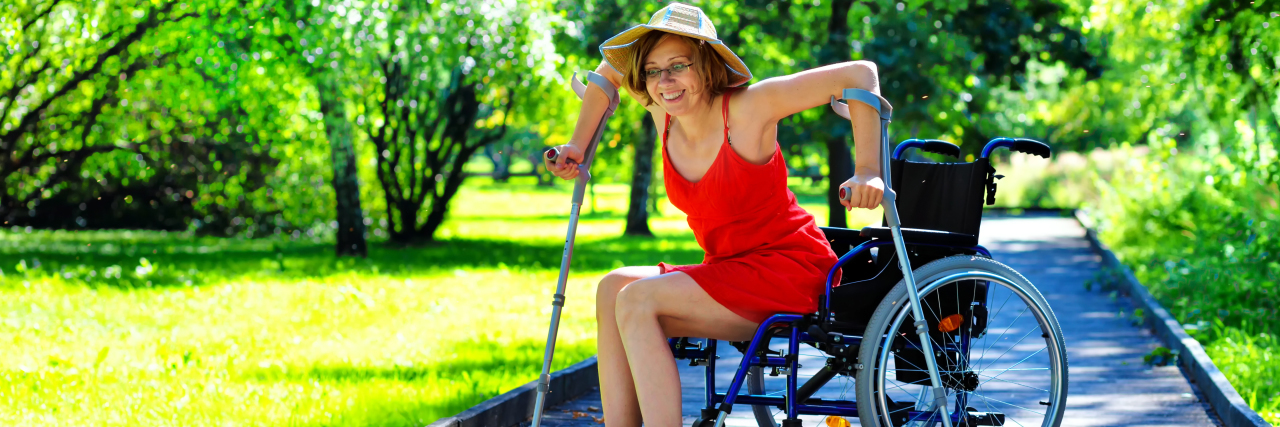Let’s talk about mobility devices, and how to choose the right one for you.When it comes to mobility aids, there are so many options within options, because most of the time whichever aid or aids you choose can and will be modified to fit your body and your needs. But there are a few basic categories of mobility aid types.
Walking aids
There are many walking aids such as canes, crutches, cane-crutch hybrids, walkers, walker-cane hybrids, or gait trainers. These kinds of mobility aids are typically used if you need a little extra support and stability while walking — a place to bear weight to reduce the strain on muscles and joints. These devices can help you get in motion and stay in motion. I do want to mention there are some sub-categories here, such as what I’m going to call a knee walker. This is something you would use if you need assistance because of a knee, hip or foot problem. There are seated rolling walkers too, if you want to walk and also be able to rest when needed.
Wheelchairs and scooters
If you’re someone who is not able to walk, either at all or for long distances, there are different wheeled independence aids. The most common is a wheelchair; there really are only two different types. A manual wheelchair allows you to be mobile through the use of your arms and legs or via another person pushing you. There is also a power wheelchair, which is an electric wheelchair controlled by you. There are so many ways power chairs can be adapted to suit people’s needs — some people drive with their eyes! If you can’t use a manual wheelchair, but also don’t think you need a power chair, there are mobility scooters.
Trailblazing aids
When it comes to mobility aids and assistive devices, you need to keep an open mind and always be exploring and trying out new things. In this article I talk about mobility aids, but there also are assistive technologies and devices for other challenges besides that are gaining ground and giving people their independence back. These range from hand controls that allow people with mobility issues to drive without touching the pedals, to an exoskeleton which is designed to aid people who perform physical labor. There also are “small” things like hearing aids, shoe horns, or sock aids.I think you should have multiple mobility aids so you can pick and choose what you need when you need it. I walk with a walker most of the time. I own a manual wheelchair. I got a mobility scooter recently, and for five years I owned a power chair. So I guess you could say I have options — as I should — and you should too!
Getty image by Apeyon.

